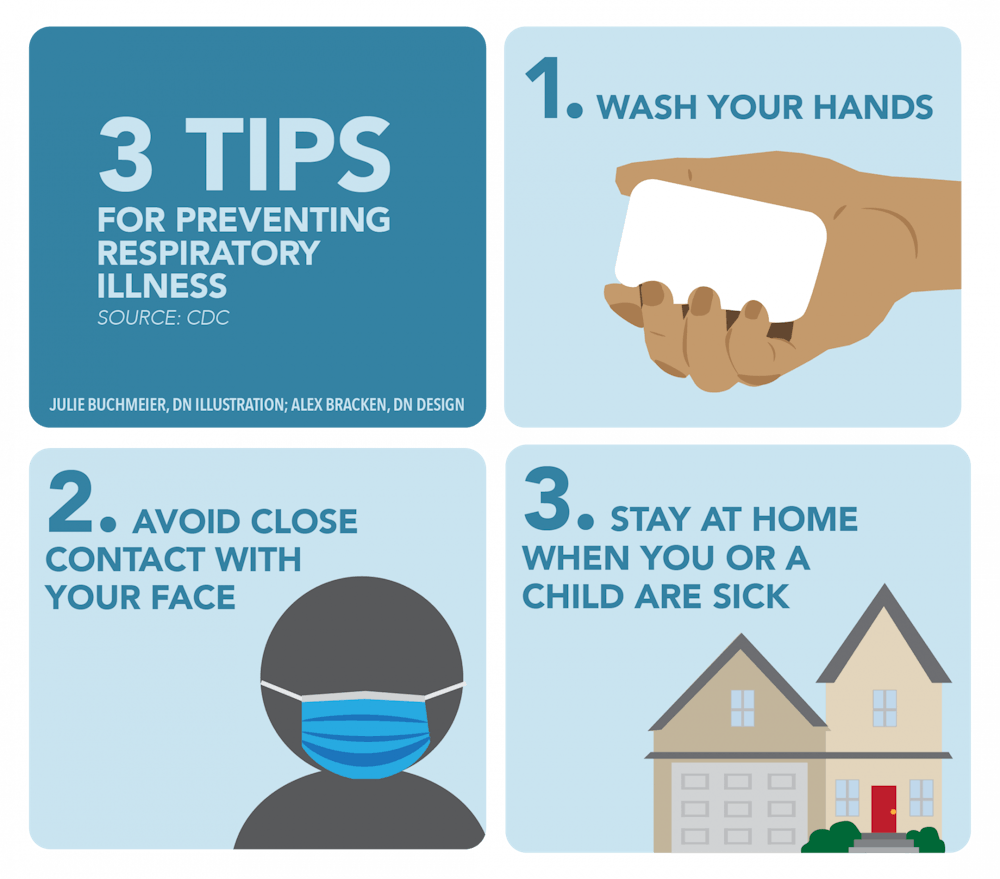Illness cases are spreading around the Midwest, as Indiana, Illinois and Ohio have high levels of the flu as of Nov. 19 and an escalating community spread of COVID-19 as of Nov. 27, according to the Center for Disease Control (CDC). However, people can be unsure on what illness they actually have, as sometimes they can confuse various illnesses with each other.
While identifying whether sickness is present or not is one thing; determining the actual type of illness someone has is a completely different problem. Since there are several respiratory viruses people may have, there’s even greater uncertainty with diagnosing their exact illness.
This uncertainty has increased with the impact of COVID-19 throughout the past several years, Jessica Scott, registered nurse and populations health manager of Open Door Health Services of Delaware County, said.
Scott said confusion regarding the sickness someone has is understandable, as several respiratory illnesses share common symptoms.
“Scratchy sore throat, runny nose, headache: those are all symptoms that could be allergies, the common cold or COVID-19,” Scott said.
However, there are noticeable distinctions between the types of symptoms produced from different respiratory illnesses. Scott claims the flu usually involves a fever but allergies and the common cold normally don’t. Differentiating between COVID-19 and the flu is only successful through testing for both illnesses as they have similar symptoms with fevers, body aches and congestion.
IU Health Ball Memorial Hospital physician Eric Westergren provided elaboration on how symptoms of the common cold and the flu interact in the body.
“Most people will have muscle aches and pains, and most people will have a sore throat, and it usually comes on suddenly [with the flu],” Westergren said. “The common cold tends to be more gradual [as] you tend to not have a fever.”
Westergren said the symptoms of the common cold can result in muscle aches and pains, generally mild. He explained “fatigue is not quite as significant” with the common cold compared to other illnesses.
COVID-19, on the other hand, is more unpredictable, as it can resemble other respiratory illnesses. In a way, it varies from person to person.
“Unlike the others, the fatigue [for COVID-19] tends to be something that is considerable in a lot of patients,” Westergren said. “Symptoms can range with COVID[-19] from as little as the common cold to more [of] a flu-like illness, which is why we’ve been testing a lot more because you can’t as easily differentiate.”

With identification and classification comes treatment in public settings. For Ball State University Health Promotion and Advocacy Director Re’Nesha Weston, Ball State offers a form of communication on physical well-being.
“We have a unique opportunity to unite our community members under our shared goals and values which creates an opportunity to educate and support one another on topics such as health and safety,” Weston said.
Much of that unity translates into available resources for information and treatment for respiratory illnesses for the Ball State community, such as the clinic and pharmacy on the first floor of the Health Center building, the CDC and Prevention website and the Ball State University COVID-19 site information. These resources provide information such as local vaccination destinations, testing and actions to take when someone tests positive for COVID-19.
Besides following university and CDC guidelines, a lot of safety precautions, while similar in years past, still remain intact for illnesses.
“People can wash their hands often with soap and water for at least 20 seconds,” Weston said. “People can stay home and contact their health care providers if they feel sick. And when people do need to cough and sneeze into a mask, [they should] change it when they can because the moisture makes the mask a bit less effective.”
Scott said while there are many accommodations that can be made for remaining healthy and safe, even small changes such as keeping hands clean make differences for boosting defenses against illnesses.
“Anytime I pump gas or I go into a store, I come back into my car and I sanitize my hands,” Scott said. “Little ways that you can improve upon your health and wellness I think are important in the return that you’ll get … and the return is always positive when it comes to you and your health.”
In general, what individuals do to protect themselves is crucial for their own physical well-being, while defending against respiratory illnesses.
“You play a part in this and be proactive about it,” Scott said. “I know that can also be scary because we can’t control other people’s actions, but we can control our own, so we can do some preventative things to help.”
Contact Zach Gonzalez with comments via email at zachary.gonzalez@bsu.edu or on Twitter @zachg25876998





